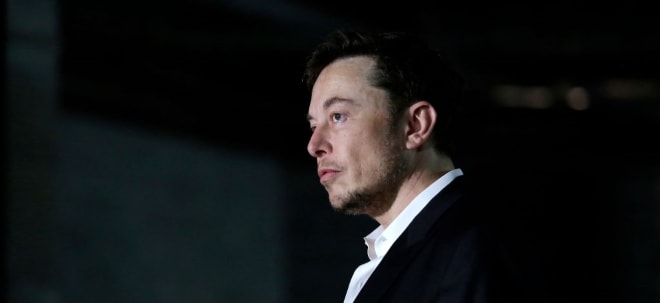Materials, Data, Landscapes, Space, and Wellbeing: Politecnico di Milano research supporting 7 Projects at the Biennale Architettura 2025
Werte in diesem Artikel
MILAN, May 14, 2025 (GLOBE NEWSWIRE) -- At the 19th International Architecture Exhibition – La Biennale di Venezia, taking place 10 May-23 November 2025, Politecnico di Milano will support seven projects addressing the challenges of contemporary architecture through an interdisciplinary lens. This year’s event, curated by Carlo Ratti, is entitled "Intelligens. Natural. Artificial. Collective.” and invites reflection on the forms of intelligence emerging from the interplay between space, technology, and society.
In this context, the presence of the Politecnico di Milano is reflected in the installations that foster dialogue between architecture, science, and innovation, engaging with themes such as sustainability, sensory perception, wellbeing, and new materials. Applied research, a cross-disciplinary outlook, and an emphasis on social impact form the common thread linking these projects, designed to enrich the global discourse on the future of architecture.
Politecnico di Milano’s Rector, Donatella Sciuto said: "The presence of the Politecnico di Milano as a supporter of several projects participating in the Biennale Architettura 2025 is part of one of the most prestigious cultural events on the Italian and international scene. The Biennale di Venezia, with its long-standing heritage and unrivalled prestige, is a hub of creativity where artists, architects, thinkers, and innovators converge and work together. It reflects the social, cultural, and technological transformations of our time, and the university finds itself mirrored in this setting as a driver of change. The university is a place of knowledge, where intelligence is nurtured, developed, and evolves and where new areas of application and forms of expression are discovered. The theme chosen by Carlo Ratti is significant for us, as it is within this framework that architecture must imagine and bring to life new worlds.”
Biennale Architettura 2025 curator and Politecnico di Milano professor Carlo Ratti said: "The message of this Biennale is urgent - the built environment must adapt to a changing planet. Architecture is no longer a matter of form, but of survival. To address this challenge, it must evolve, drawing on all forms of natural, artificial, and collective intelligence at our disposal. This is why universities play such a crucial role in this year’s Biennale, especially in a time when they are confronted by emerging forms of obscurantism. We are honoured to count Politecnico di Milano among our participants. I hope the Biennale can carry this message to Piazza Leonardo da Vinci and our current and future students. Architecture has the power to change the world, if we are brave enough to let it.”
The Politecnico di Milano supports the following projects participating in the Biennale Architettura 2025:
Material Bank - Matters Make Sense is a project set up at the Corderie dell’Arsenale, presented by Ingrid Maria Paoletti and Stefano Capolongo (Department of Architecture, Built Environment and Construction Engineering, Politecnico di Milano), together with set designer Margherita Palli and Nobel Laureate Konstantin Novosëlov (National University of Singapore), awarded for his work on graphene. The project explores perception as a fundamental form of intelligence, linking innovative materials, sensory experience and the built environment. Inspired by the intertwined concepts of a labyrinth and a library, the installation, features interactive devices such as the Polimi_Sensing Core, which enables visitors to perceive their own heartbeat through reactive fabrics, prompting a reflection on the body as an environmental interface.
On display at the Arsenale, within the Intelligens Canon section, Milano Urban Mine is an applied research project proposing a spatial model designed to map building components at the end of their life cycle. The aim is to encourage material reuse strategies in urban settings, supporting the principles of a circular economy and sustainable urban planning. Developed by participants Andrea Bortolotti, Matteo Clementi, Federico Godino and Elena Luongo (Department of Architecture and Urban Studies at Politecnico di Milano), and based on an academic exercise carried out within the 2023–2024 Urban Planning Laboratory at the School of Urban Architecture and Construction Engineering of the Milanese university, the project aligns with current approaches to urban regeneration and material flow analysis.
Resourceful Intelligence is an installation created through a partnership between Park, Accurat, and the Politecnico di Milano research team composed of participants Gabriele Masera, Francesco Pittau and Michele Versaci. The project tackles the challenge of reusing material resources in the urban landscape, suggesting strategies to reduce raw material consumption via selective deconstruction and mapping resources. Based on two Milanese case studies, the installation illustrates how the built environment can serve as an active reservoir for city regeneration, championing an architectural methodology grounded in circularity and sustainability. This contribution is part of Politecnico di Milano’s wider commitment to design approaches that are conscious, adaptable, and geared toward ecological transition.
With the "Instabilities. The shifting Alpine landscapes” project, Politecnico di Milano supports to the Biennale Architettura 2025 a cartographic investigation of the Alpine region, displayed at the Corderie dell’Arsenale. This work, developed by participants Francesco Garofalo (Visiting Professor) and Chiara Geroldi (Department of Architecture and Urban Studies, Politecnico di Milano), results from a partnership with BOKU University of Vienna (INLA) and the design studio Openfabric. First conceived during a project workshop within the master’s degree programme in Landscape Architecture – Land Landscape Heritage, this project challenges the idea of the Alps as a fixed and unchanging landscape. It traces the extractive processes such as quarrying, hydroelectric power, ski tourism and monocultures that have historically shaped and continue to transform the Alpine region. Using critical maps, sectional drawings, and visual representations, the project portrays the Alps as a dynamic landscape of extraction—shaped by cycles of expansion and contraction and crossed by material flows and global infrastructure networks.
REwind REwild is a project by the Centro di Competenze Territori AntiFragili (CRAFT) of the Department of Architecture and Urban Studies at Politecnico di Milano, showcased in the Italian Pavilion – Terrae Aquae. L’intelligenza del mare (The Intelligence of the Sea), by Valeria Fedeli, Massimo Bricocoli, Chiara Nifosì, Cristina Renzoni and Nicola Russi, the project explores the instability of Mediterranean coastal areas through a series of 18 research projects presented in video format. REwind REwild introduces a "polytechnic” and "polytemporal” design approach focused on building resilience and reshaping the connection between infrastructure and natural processes. Set against the backdrop of climate change and urban challenges, the project investigates rewilding strategies and approaches to regional governance that transform crises and disruptions into opportunities for adaptation and regeneration.
Archive & the City is a visual exploration project based on the Historical Archives of Contemporary Arts of Biennale di Venezia, designed to convey the complexity and richness of over a century of artistic heritage through three large-scale graphic visualisations, each measuring 3×3 metres. Created in partnership with the DensityDesign Lab from the Politecnico di Milano Design Department and coordinated by Luigi Farrauto with Jon Kleinberg, Marco Santambrogio, Achille Varzi, these visualisations convert archival data into an engaging, immersive visual experience. The first showcases the structure and diversity of the stored materials; the second arranges more than 140,000 digital images based on their visual similarities, revealing unexpected connections across different eras and events; the third highlights the relationships between artworks and individuals, uncovering hidden connections and often overlooked figures. The project experiments with data visualisation as a tool for critique, storytelling and curation.
Design as an Astronaut provides a virtual reality experience within the Argonaut Habitat Unit, developed with the support of the European Space Agency (ESA), MIT Media Lab and Politecnico di Milano. Presented by Valentina Sumini, Cody Paige, Tommy Nilsson, the project investigates the living potential of the Argonaut lunar lander, re-envisioned as a habitat module for short-duration human space missions. The work combines algorithmic modelling and innovative materials - such as Kevlar and mycelium - to create a lightweight, safe and self-sufficient structure. The interior, designed for the astronauts’ psychophysical wellbeing, provides adaptive solutions and lighting strategies inspired by circadian rhythms. It is an invitation to consider extreme habitats as laboratories for a new culture of sustainability.
For more information:
Press Office LaPresse - ufficio.stampa@lapresse.it
A video accompanying this announcement is available at
https://www.globenewswire.com/NewsRoom/AttachmentNg/fd830cfd-f2a7-4f05-9ea4-37f992284766

Nachrichten zu Mitsubishi Materials Corp
Keine Nachrichten im Zeitraum eines Jahres in dieser Kategorie verfügbar.
Eventuell finden Sie Nachrichten, die älter als ein Jahr sind, im Archiv
Analysen zu Mitsubishi Materials Corp
Keine Analysen gefunden.

